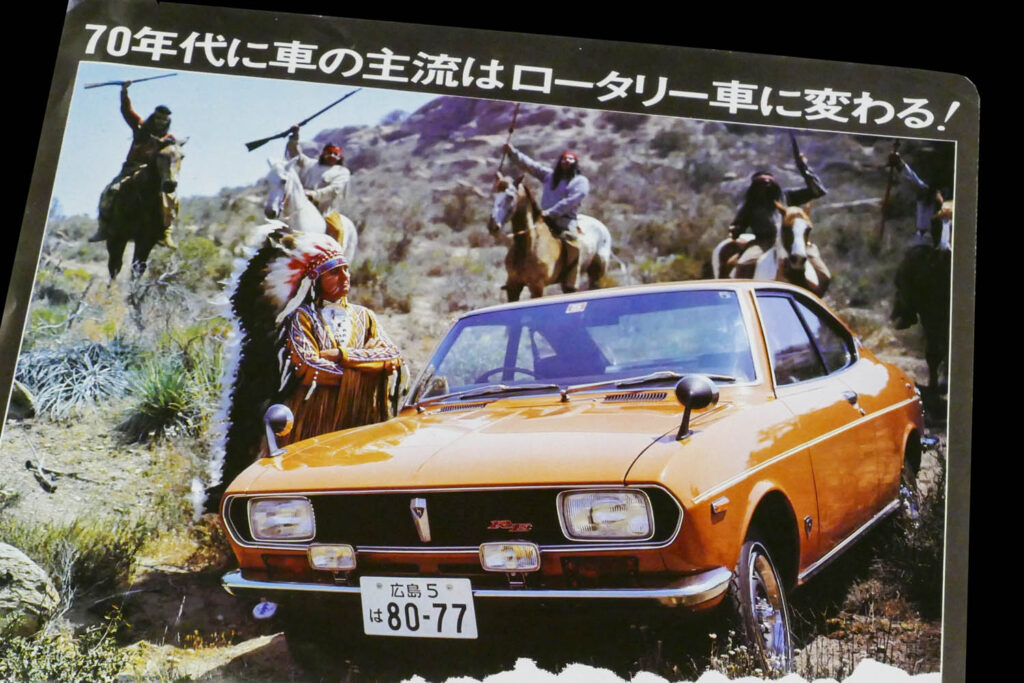The masterpiece that must not be forgotten in Mazda’s rotary history
The MX-30 Rotary-EV was launched in 2023 as “a car with electrification technology that uses the rotary engine as a generator”, and Mazda’s unique approach to electrification, which leverages the company’s strengths, is also attracting attention. The MX-30 Rotary-EV is the first rotary engine-powered vehicle in 11 years, since the RX-8 was discontinued in 2012.
In 2023, the cumulative production of rotary-powered vehicles reached two million units
During this period, Mazda has kept the RE fire burning and continued research and development to revive it as the latest technology adapted to the new era. One of the fruits of this work is the 830cc x water-cooled, one-rotor model mounted on the MX-30 Rotary-EV, which is called the 8C-PH model. In 2023, the cumulative production of vehicles with rotary engines will reach two million units, and the MX-30 Rotary-EV will be the 12th model counting.
As you know, it was 1961 when Mazda completed the first rotary engine prototype based on a technical collaboration with NSU Bankel in West Germany (at the time). In 1967, the Cosmo Sport became the first Mazda production car to be equipped with a rotary engine. Since then, Mazda has been the only car manufacturer in the world to mass-produce rotary engines.
The Cosmo Sport, incidentally, was equipped with a 491 cc x 2-rotor type 10A engine with 110 hp/13.3 kgm at the time, in a compact, sports car-like body. It boasted a top speed of 185 km/h and 0-400 m acceleration of 16.3 seconds. On this occasion, the 11 models from the Cosmo Sport onwards, up to before the MX-30 Rotary-EV, are listed again as follows (first generation of each model and its launch date).
May 1967: Cosmo Sport
July 1968: Familia Rotary Coupe
October 1969: Luce Rotary Coupe
May 1970: Capella (first generation)
September 1971: Savanna
November 1972: Luce (second generation)
April 1974: Rotary Pickup (North American and Japanese name: Proceed)
July 1974: Parkway Rotary 26
April 1975: Road Pacer
March 1978: Savanna RX-7
April 2003: RX-8
Capella debut in 1970
Now, the fourth model among the rotary-engined cars to date was the first-generation Capella, which made its debut in May 1970, the year before the Savanna was launched. I was in sixth grade when the first-generation Capella went on sale, and I remember riding my bicycle from home to the dealer’s exhibition with a compact camera hanging from my neck.
I was never going to have a lot of pocket money, and the film was of course black and white, but poof! I would take photos of the actual car on the exhibition ground (which was gravel) with my Halina, a plastic-bodied pack camera with a primitive shutter sound, and I was allowed to sit in the driver’s seat and receive a catalog on my return.
However, when I checked for this article, I could not unearth the catalog that I would have received from the dealer at that time. So, the photos shown here are from the Mazda brochure from the Tokyo Motor Show and a barely existing catalog of the Capella after the minor changes.
The car boasted a top speed of 190 km/h and a 0-400 m time of 15.7 seconds
The 17th Tokyo Motor Show brochure treated it as the top production car of the year, with the headline “In the 1970s, cars will turn to rotary cars!” The Cosmo Sport, Luce Rotary Coupe, and Familia Rotary Coupe, all of which had been equipped with rotary engines, appeared on the page with the headline “Rotary cars will become the mainstream in the 70s”.
The orange Capella shown in the photo is the color of the coupe when it appeared, along with the rear view of the sedan, which shows the RE badge and round four-lamp taillights. Specifications included a rotary engine (573 cc x 2), 120 hp, 190 km/h (185 km/h for the sedan), and 0-400 m acceleration of 15.7 seconds (coupe, two-seater. Sedan is listed as 15.8 seconds).
There is another part of the motor show brochure, the 18th edition, which includes a photo of the G-series (see below) with round four-lamp headlights, and below it a nostalgic image of the newly introduced first-generation Savannah.
In 1974, the G series developed into the ‘second generation’.
The sole Capella catalog is from the G-series. It is believed to be dated October 1975, as the cover has the words ’51 years compliant’, which represents the level of exhaust emission regulations at the time. According to Mazda documentation, this generation, which was introduced in February 1974, was the second generation, and changes compared to the first generation included a 110 mm longer nose section for pollution control improved cooling performance, and a new instrument panel with a quadruple meter.
Of course, the rotary engine was also introduced in this catalog. The 12A rotary engine at this time had a maximum output of 125 hp/6500 rpm and a maximum torque of 16.5 kgm/4000 rpm, and the transmission was a 3-speed AT, as for manual transmissions, the Sedan GRII/Coupe GSII had a 5-speed and the Sedan GR/Coupe GS had a 4-speed The fact that manual transmissions were available is also not to be overlooked.
translated by DeepL
